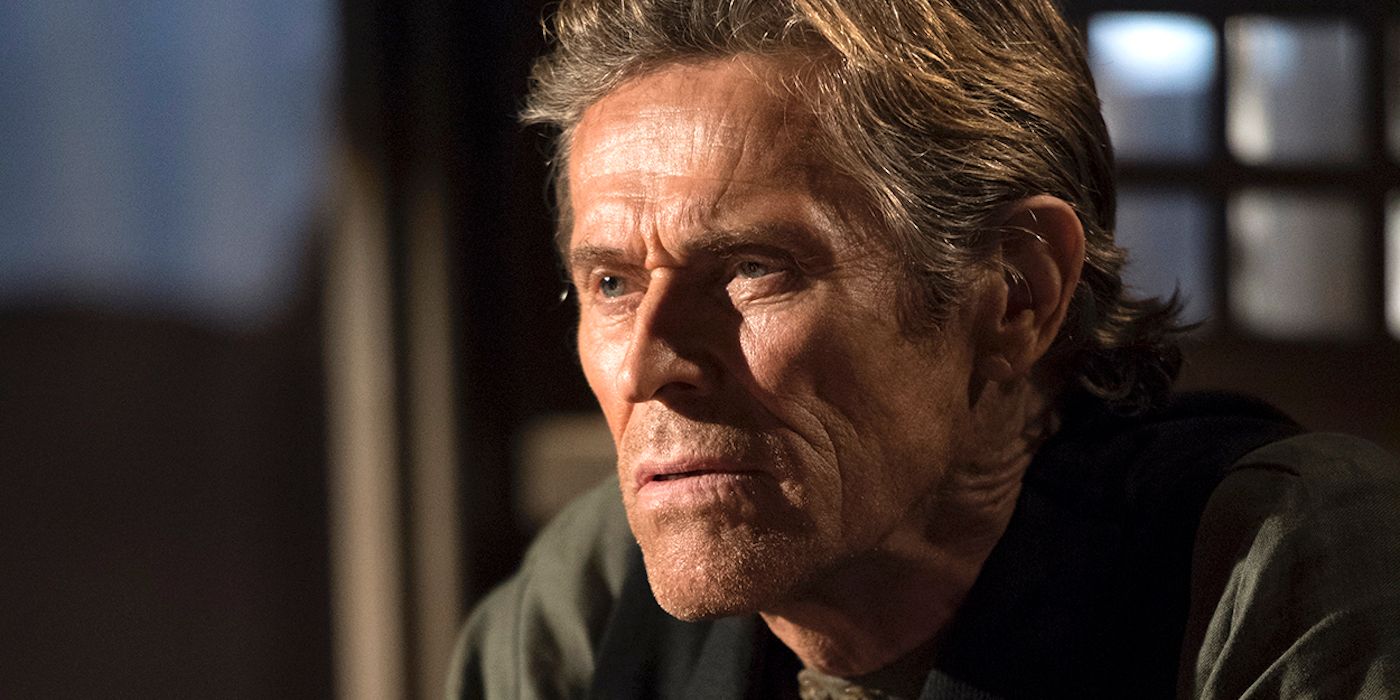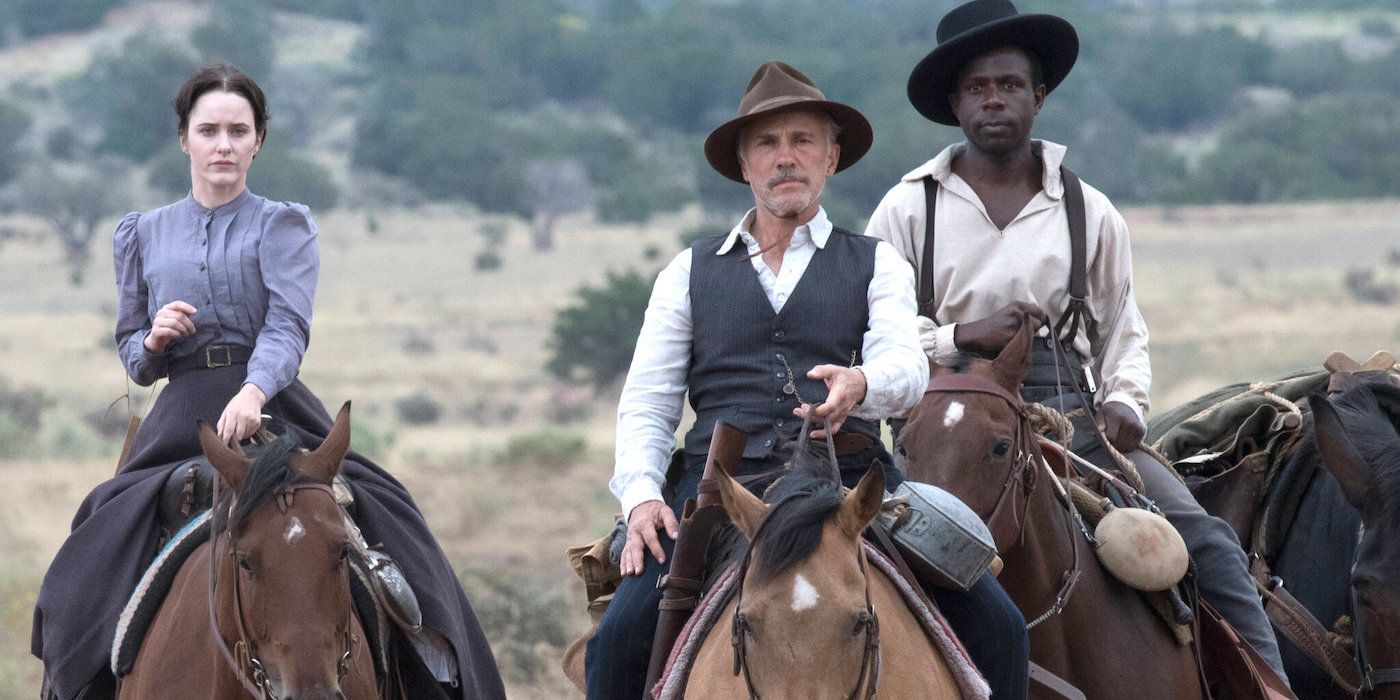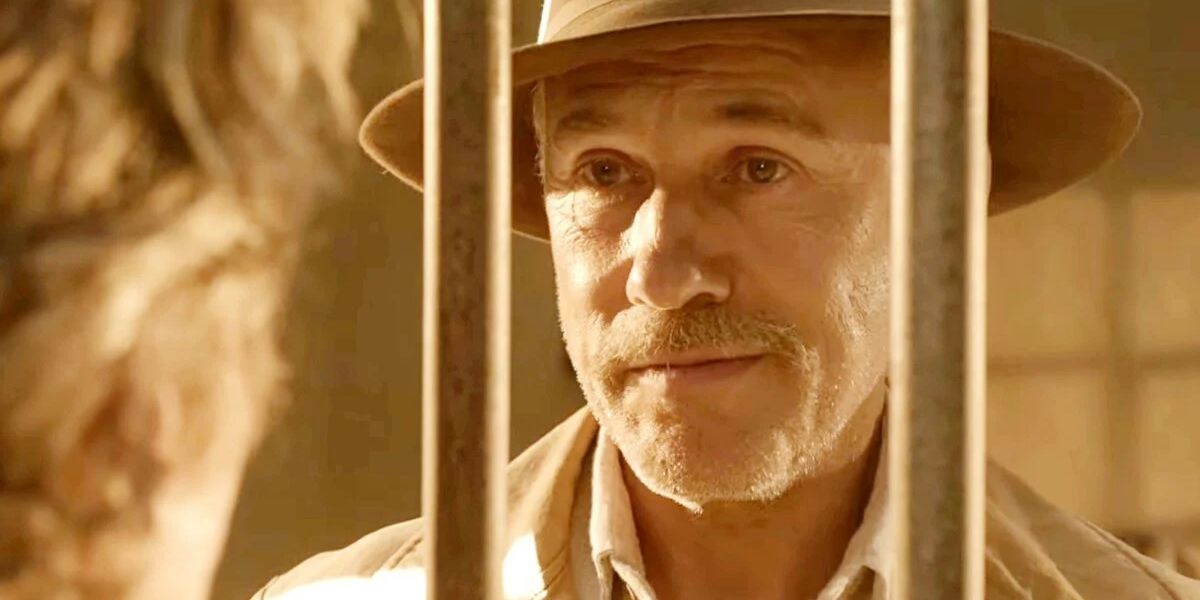When you take a look at the main cast of Dead For a Dollar, it’s hard not to get hyped up for what you are about to watch: Christoph Waltz, Brandon Scott, Willem Dafoe, and Rachel Brosnahan are among the best actors working in Hollywood right now. And not only that, the new Western has a strong supporting cast that features Hamish Linklater and Benjamin Bratt. So, it’s obviously frustrating to see this much talent get lost in less-than-stellar performances. But this pales in comparison to Dead For a Dollar’s worst crime: It has nothing to say.
If a filmmaker decides to set their story in a genre that has long seen its Golden Age in Hollywood, it’s important to either have an angle or just be a plain, fun and thrilling adventure. Dead For a Dollar does neither. It feels even criminal to compare it with great takes on the genre like Jane Campion’s The Power of the Dog or the Coen brothers’ True Grit. In this story, a bounty hunter and lawman is hired to find and rescue a woman who’s run off with a Black man. Meanwhile, he’s on track for a showdown with his ruthless nemesis, whose main dangerous trait is that he shoots cockroaches — mercilessly.
You can tell there’s something wrong with Dead For a Dollar in one of its earliest scenes. Max Borlund (Waltz) goes to jail to confront Joe Cribbens (Dafoe), who’s about to be released. In the scene, you have two men who are supposed to hate each other and hold a years-long grudge, and yet… you feel no tension. During the whole conversation, you don’t get the sense that either of those men is in danger. In fact, you feel like they could probably work out their issues if they sat down to talk over drinks.
But this is just an instance of the movie’s general problem: It simply lacks tension. Throughout its runtime, we follow people who live through life-or-death situations on the daily, and see some individuals to whom, as the title indicates, other people’s lives are worth very little. But the more the story develops, the more we get the sense that the main characters are pretty safe, and the wild wild West isn’t as wild as the movie wants it to be.
Not that director Walter Hill (48 Hrs.) doesn’t have its moments. Every once in a while, he does some clever use of the camera, like when he wants to illustrate how talkative Sergeant Poe (Warren Burke) is: In an extreme wide shot, we see him monologuing to Borlund incessantly as they move from one end of the screen to the other, and the scene perfectly — and funnily — demonstrates how it feels like the character never shuts up. Unfortunately for us, Poe's personality is quickly watered down as the story progresses.
“Progress” is a generous term for most of the movie’s story, since it is mostly based on a threat that is frequently stated by characters but never felt by who’s watching. Hill and Matt Harris’ (The Starling) script is so worried about making sure the audience understands the stakes that they come up with a full character, Esteban (Luis Chávez), whose only purpose is to make exposition and state how dangerous his boss is. And, to no one's surprise, Tiberio Vargas (Bratt) is hardly as evil as advertised: You know what they say about dogs who bark too much.
Dead For a Dollar also never justifies its setting when it comes to addressing issues of the late 19th century. Racism and xenophobia are barely acknowledged, and characters who are POC never make it past one dimension. True, that can also be said about pretty much all characters in the movie, but Caucasians at least get screen time to blurt out their motives and their journey to whoever’s listening.
As you would expect, the Western culminates with a gunfight (and a laughable whip showdown) in which you never fear for the main cast’s safety. From the beginning of the movie, you can map out who’s going to survive, who will get their vengeance, and which characters will get killed for emotional value. When it comes to predictability, then, Dead For a Dollar fully honors old-time Westerns.
In the end, the movie tries to validate its story with title cards that reveal what happened to the characters afterward. The decision to suddenly transform the movie into a biopic feels like an afterthought, and only underscores its problem. A biopic usually highlights the journey or a particular event in an individual's life, and yet we exit the film with the sensation that we know nothing about any of its characters, nor care about them.
With the options of taking the audience on a fully-fledged bang-bang Western adventure or commenting on the genre’s issues in past decades, Dead For a Dollar chooses to do neither and wastes its stellar cast with drowsy performances which never make you root or fear for any character. It relies too much on exposition to relay its tension and fails to convey the danger of its world. The beats can be predicted by anyone who’s seen a couple of titles in the genre, and ultimately, the movie is the perfect example of why nostalgia can’t be done for nostalgia’s sake.
Rating: C-
Dead For a Dollar is now playing in theaters.



